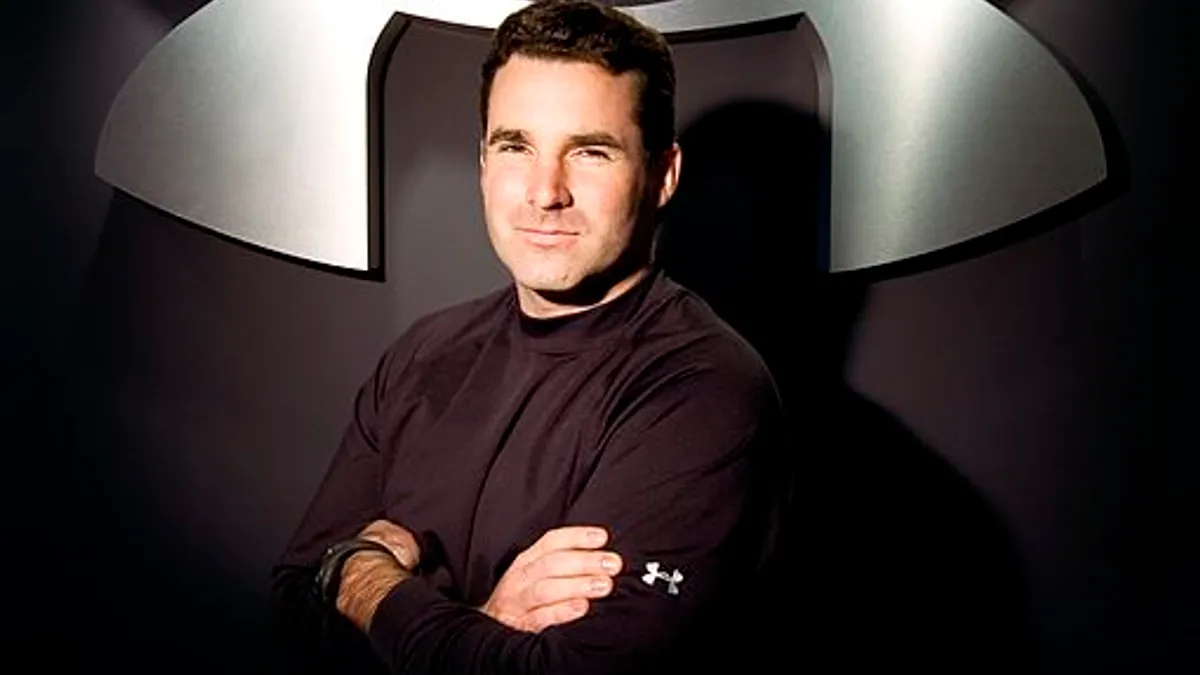Under Armour is taking a tip from the athletes it markets to this year, as it bounces back from a tough 2017 to become "stronger, faster and leaner" beyond 2018.
A tough U.S. retail market combined with rapid global expansion led to myriad problems for the company in 2017 – from a botched ERP transition, to declining wholesale growth and rising sales, general and administrative (SG&A) expenses.
"To address this issue, we must operate a better company," Chairman and CEO Kevin Plank told investors last October. "But this will take some time."
"In 2017 and 2018, as we work to reset and strengthen our underlying business, we have three main goals: operate, fuel and innovate," he said. The goals, he said, would help the company embrace a direct-to-consumer (DTC) model and enable global retail success.
To achieve them, the company planned to alter how its end-to-end supply chain operates. As it speeds up its design-to-market cycle, the company also has to re-evaluate its cost structure, including volumes, pricing strategies and its asset network.
"Following many years of rapid growth and infrastructure build, we are in the process of simplifying operations," Patrik Frisk, president and chief operating officer at Under Armour said in an earnings call last week.
Under Armour spent $129 million in 2017 to implement a five-year restructuring plan, the company announced last week. In 2018, the company plans to spend another $110 million to $130 million. The costs will cover facility and lease terminations, contract terminations, inventory related charges and asset-related impairments.
"Based on our restructuring efforts in 2017 and 2018 we anticipate a minimum of $75 million in savings annually from these efforts as we move into 2019 and beyond," said David Bergman, chief financial officer at Under Armour.
But the transition to a DTC model is also bringing higher costs for Under Armour.
As the channel’s sales grow, they also bring in higher SG&A expenses due to increased distribution costs. Plank noted the company’s SG&A expenses rose 14% in 2017 to account for 41.9% of the company’s total revenue. In 2016, the line item had risen 22%.
Plank said the high SG&A share of revenue was due to a "highly committed cost structure" and assets over the past years, as well as a decline in top-line growth, which alters the math.
That’s part of the reason capital restructuring, through changes in facilities and inventory held is important to the company.
Frisk noted the company seeks to hold 30% to 40% fewer SKUs by 2019, and 25% less by the end of 2018, as the company doubles down on the products that sell most and uses category-segmented data and technology to make those choices.
However, high SG&A may just be par for the course when it comes to growth, Bergman noted. Capital investments must be made if growth in the DTC businesses and international markets is to be maintained.
"It’s very difficult to unpack five years of investing to scale in just five quarters," Plank said; but if 2017 was about "getting started," 2018 is about optimizing the company’s operations.
Athletes know becoming stronger and faster requires a firm commitment to goals, and a daily strategy to reach them. Under Armour is betting its business can follow a similar path.
"Once the structure is set, and the process is in place" to put the consumer at the center of the business model, it becomes the core of a go-to-market strategy, Frisk said last quarter. "This end-to-end approach then becomes repeatable, ensuring a more consistent and predictable outcome."















